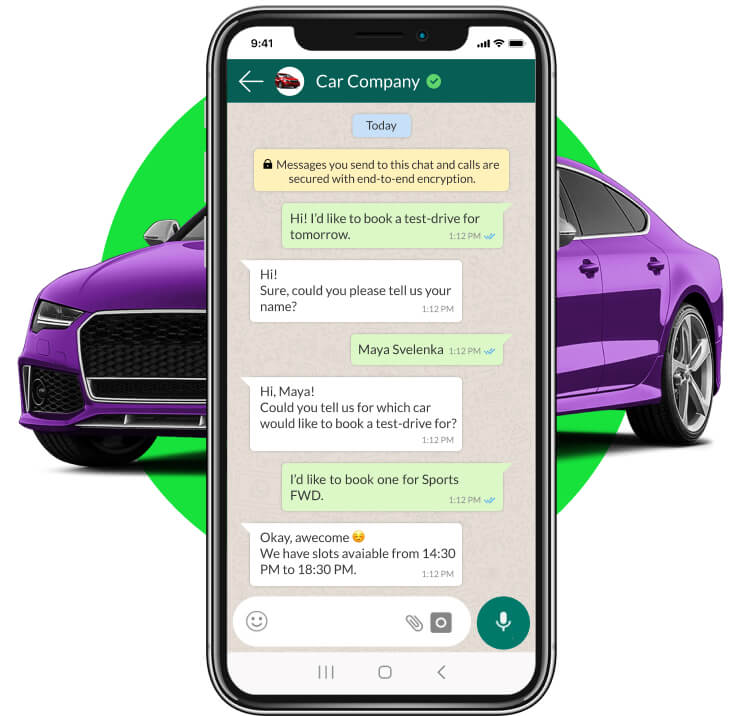Businesses Re-evaluate Approach to Customer Experience in the “New Normal” World
Customer centricity has been around for a while. Most successful CEOs today agree that providing an outstanding customer experience is a strategic priority for their company — they keep their customer’s needs and desires at the forefront of their strategy. However, the Covid-19 pandemic — which has hit businesses hard and brought about a tectonic shift in customer behavior, shifting their habits, consumption patterns, and values — has compelled even the most customer-focused brands to re-evaluate their approach to customers.
The pandemic’s impact on customers has been widespread and immediate across all industries. They were forced to stay indoors, millions lost their jobs, and health and safety became top concerns. Consumer spending fell to an all-time low and many businesses had to shutter down, some permanently. In this changed landscape, businesses have realized that the challenge now is not just to think about what their customers want, but rather on what they need. Companies need to innovate in new ways to solve their customers’ current challenges and assure them they are still valued and cared for. This realization has been brought on by the fact that although covid will recede at some point, the changes in customers’ buying behavior will last long afterwards. Keeping a real-time pulse on changing customer preferences and rapidly innovating to meet customer expectations will be key priorities for businesses. Six major customer-strategy shifts are being seen already:
1) Serving Customers with Empathy
In the post-covid era, companies will need to put their customers’ needs before excessive profiting. COVID-19 has left people overwhelmed, destroying lives and livelihoods and making people fearful. People now spend only on things or services that they deem essential. Also, drastic lifestyle changes have altered consumer purchase behavior, for instance working from home has resulted in reduced sale of office wear and increased sales of lounge wear. The very meaning of “customer care” is undergoing a paradigm shift. What will matter to customers most now is how well businesses deliver services that meet their new needs with empathy in a crisis of this magnitude. That would be the true measure of customer experience now. On cue, many businesses are reorienting their CX efforts to meet their customers’ primary needs.
Businesses are building safety into the very fabric of customer experience and delivering frictionless experiences to build trust. Steps are also being taken to offer much-needed financial relief. Many businesses are offering bigger discounts than what they would normally would. Hospitals are providing telehealth services at cheaper rates. Banks are waiving off interest on credit cards. Many airlines and travel companies are forgoing cancellation fees for cancelled tickets and tours. Such acts are helping to develop them build relationships based on trust and empathy.
As per a KPMG report, 43% customers are worried about financial security in 2021; 36% are prioritizing savings over spending; 37% are working from home, and 60% plan to do so in future; 45% customers predict digital channels to be their main connection to brands
2) Adapting to Changes Quickly
Covid has resulted in dramatic changes taking place overnight. Customers have suddenly been driven indoors and have come to dread activities they would take for granted earlier, say travelling, shopping, enjoying buffets, etc. they earlier took for granted. Such dramatic changes demand quick shifts in strategy, offerings, and technologies on the part of organizations. Quick-thinking CEOs in retail, healthcare, auto, and food & beverage sectors have acted fast to focus on solutions that are relevant to solving challenges their customers are facing now, for to act late will be akin to not acting at all. Customer experience leaders have quickly pivoted to come up with new tools that are easy-to-use for customers, making their adoption quicker and hassle-free. They have moved fast to bring their services online, added new products, changed their messaging to add empathy, scoured new avenues of sales, and worked with partners to solve delivery and last-mile challenges. They have made their infrastructure interconnectable, scalable, and flexible so they can adapt to change faster. Many businesses have changed their operating hours, increased their presence on digital channels like WhatsApp API, and created quick response teams that can resolve customer challenges quickly. Others have started selling new products that are more relevant to customers now. Luxury apparel brands have started selling masks overnight, perfume makers have used some of their plants to produce hand sanitizers instead, automotive factories are using some plants to make life-saving ventilators, ride-sharing companies are helping transport medicines and other supplies, and so on. Such agility helps businesses recover losses faster and also ensure greater trust and loyalty in the long term.

3) Projecting the Human Side of the Brand by Connecting Customers With Employees
Brands know that the in-person experiences people got when they visited stores prior to the pandemic was integral to how customers experienced a brand. Store employees would guide customers personally, which would help the brand forge meaningful, lasting connections with customers. With the pandemic enforcing seclusion, that touch was lost. What’s more, many customers who may not be that digitally savvy now struggle to navigate digital touchpoints and need human assistance even more. In response, many forward-thinking brands have come up with innovative strategies to fill this gap – they are embedding human interactions into digital channels. Many sales employees are answering customer queries on video calls, and guiding them in matters of product selection. Employees are providing that all-crucial human element online and helping brands reach out to customers at their homes. They are encouraging them to partake in brand activities such as online challenges, virtual shows, etc. that help customers feel closer to the bond.
This has also resulted in customers caring more about the employees’ well-being. Customers are increasingly judging companies based on how committed they are to their employees’ welfare in such unprecedented times. Brands have realized that how they treat their employees will reflect on their company values. Many are offering financial assistance to teams, covering health expenses if employees get sick, providing protective gears such as masks, face shields, gloves, wipes, etc. and cleaning equipment like sanitizers, sprays, etc. to employees who need to travel. Store fronts are putting up plexiglass sneeze guards to protect employees and cleaning premises at regular intervals. They are implementing cashless payment options like scan and go, and enabling contactless delivery to protect both customers and employees. Many brands are also putting the spotlight on employees and asking them to share their own experiences with customers on social media channels.
4) Reimagining Showrooms and Other Physical Touchpoints
As covid recedes in places and stores and offices limp back to life, businesses are taking steps to ensure that safety is never compromised. They know they need to plan for the future – the virus might recede but its fear will linger on for years. So they need to allay people’s fears when they do step out of their homes. Many retail brands are already modifying their store layouts and creating one-path shopping designs for customers to maintain adequate distancing. Airports, banks, car dealerships, healthcare centers, restaurants, hotels, etc. are all changing their seating arrangements, using advanced queue management techniques, and initiating contactless payments options to ensure customer safety. Frictionless solutions such as scan-and-go, click-and-collect, drive-through checkouts, and curb-side pick-up are gaining traction. With e-commerce comprising a significant chunk of overall sales, and in-store purchases falling, businesses are also looking to reimagine the in-store experience. Many stores are deploying AI store assistants to help out with product-related information. Stores are also acting as touchpoints from which businesses drive their online traffic.
Want to find out how you can effectively connect with your customers in this “New Normal”?
Get in Touch
5) Creating Online Experiences Not Considered Fit for Digital Earlier
With Covid-19 bringing offline sales to a grinding halt, most companies have been forced to shift their businesses online. Even businesses that have traditionally been reluctant to move to digital communication – like the auto industry, healthcare, and pharma, – are doing so. Forward-thinking companies have moved at top speed to develop new products and services that will appeal to an online clientele. Businesses are implementing advanced automation technologies to create effective and engaging online services. Many have adopted AR and VR technologies to create next-level experiences for customers.
Many businesses such as car dealerships that were previously thought to be unfit for online sales have now been virtualized. Many auto dealerships are working to move their entire car selling process online. Banks have expanded their range of services to include online customer onboarding. Insurance companies have started reimbursing customers for virtual telehealth appointments. Many travel companies are offering virtual tours to popular travel destinations. Some restaurants are sharing favourite recipes through online cooking classes. Virtual fitness classes are booming. The fashion industry is livestreaming virtual catwalks. Furniture behemoths like Ikea are letting customers view virtual furniture showrooms from their homes.

6) Deploying Communication Channels to Create Deep Engagement
Earlier, stores were the places where the maximum sales happened. They were also great touchpoints for businesses to make meaningful connections with customers. With covid, businesses are looking at new channels to create the same emotional connections with customers by reaching them where they are, i.e., at their homes on their mobile phones. One of the easiest and most effective ways for companies to create and maintain deep engagement with their customers is via adoption of digital communication channels. Even before the pandemic, today’s digital natives would prefer to look up products online and chat with companies before taking purchasing decisions. After the pandemic, this has become a critical need as they are unable to step out of their homes. So businesses are increasingly marking their presence on popular communication channels like WhatsApp to reach out to customers.
Digital communication touchpoints like WhatsApp API provide a more personalized experience compared to traditional marketing channels. Businesses are leveraging them to handhold customers throughout their entire journeys, share exclusive discounts, create a buzz around new product launches, and nudge customers towards making a purchase, and also ensure customer convenience and safety while they are at it. They also enable businesses to create synergy between digital and physical channels.
Conclusion
Clearly, the current crisis is forcing companies to remodel their customer engagement processes to accommodate the customers’ changed circumstances. Companies that respond to these changes rapidly will recover from the shock faster and will build long-term relationships with customers




![[photo]](https://edna.io/wp-content/themes/edna/images/authors/rajrupa-ghoshal.jpg)
![[icon]](https://edna.io/wp-content/themes/edna/images/authors/ico-linkedin.svg)